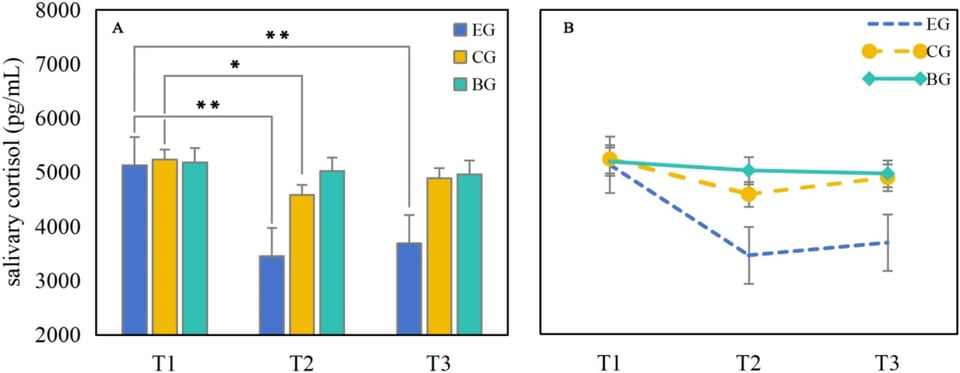Research Roundup (#20)
.png/:/rs=w:1440,h:1440)
Welcome...
Welcome to the twentieth-ever Research Roundup! A weekly catch-up on the latest developments in the field of XR research.
It’s been a busy week, so let's not hang around.
The Week in 3 (Sentences)
New research on mental health interventions has shown VR-enhanced mindfulness and yoga sessions reduced depression and anxiety symptoms in postpartum women, while ConVRSelf simulated conversations improved emotion regulation and reduced psychological distress.
More research this week on cybersickness, with researchers developing a real-time method for detection without user calibration, while a new framework has been proposed to provide standardisation for investigations across research labs.
And finally, implementation in healthcare was in focus with VR simulation enhancing neonatal emergency nursing training across four paediatric hospitals, whilst a survey of US physical therapists found only 7% currently use VR in clinical practice.
The Week in 300 (words)
Researchers from China published their findings on the use of VR for mindfulness practice and yoga in postpartum women affected by long COVID. Particularly impressive was the use of both a passive ‘do nothing’ control group, as well as an active control group that received ‘business as usual’. Participants self-reported their depression and anxiety, whilst stress was measured more objectively using cortisol levels, and an emotional stroop task measured cognitive control. The VR group reported significant reductions in depression and anxiety, reductions in cortisol and improved cognitive control. The authors suggested that the controlled and distraction free environments, afforded by VR, may have led to deeper states of presence and focused attention. It is indeed a possibility.

Getting frustrated by the mixed findings around cybersickness? You're not alone. Researchers in Switzerland have shared a preprint proposing a standardised framework for testing cybersickness. They note the area is plagued by inconsistent and mixed findings including around age, gender and past experience, as well as the effects of reduction techniques. They attribute these inconsistencies to differences in the VR simulations used, individual differences between participants on key demographics, and the differences in hardware. The team analysed existing frameworks first before devising their own to be used by both experienced coders and those that are less confident. Whether it solves the problem depends on interest and uptake, but if you want to try it is here.
And finally, physical therapists in the US (n=658) were surveyed regarding their VR use. Only 7% of the sample were using VR in their practice but many more were open to it in the future. Significantly, intention to use was related to attitudes, perceived ease of use, compatibility, client influence and self-efficacy. The authors conclude that interventions are needed to encourage implementation targeting these factors. How that works specifically is unclear, but appropriate educational material and training may be part of that solution. I suspect that something else may be needed too.
Paper of the Week
The paper of the week this week is on the surface very similar to many other papers. The authors are interested in the application of VR to a specific problem, foreign language anxiety and presentation skills, and the impacts of VR on skill development. However, what made this paper stand out was the exploration of the customisable nature of the experience.
Now this is particularly niche, bringing together research on language learning, foreign language anxiety, and the development of presentation skills. The questions about customisable experiences however highlighted an intriguing step forward. What can we learn from including customisation?
The customisation features allowed the participants to choose their avatar, the presentation environment (classroom or conference room) and the audience size (1,4,10 and 15). One might generally assume that in using VR to improve your presentation skills, and combat anxiety, that you would take a graded approach. However this is an assumption and where a graded approach is used it is often imposed by the researcher.
Qualitative analysis of semi-structured interviews and participant behaviours revealed a pattern of behaviour consistent with this graded approach. Participants would generally choose smaller environments with less people and work towards the larger venue.
Why is this important? Whilst the finding is consistent with the prior literature, and in that respect unsurprising, what it does highlight is the way in which customisation can be used as a research tool. Through having options that are relevant to the underlying theory of behaviour it was possible to observe whether participant decisions were consistent with the assumed cognitive processes. In this respect customisation adds another option that is relatively unique to this field. And it is for that reason that this makes it as our paper of the week.
Looking Forward
As the Research Roundup moves towards its 21st issue, we’re considering seeking sponsorship to support the roundup's continuation.
Any partnerships would be carefully chosen for relevance and clearly identified.